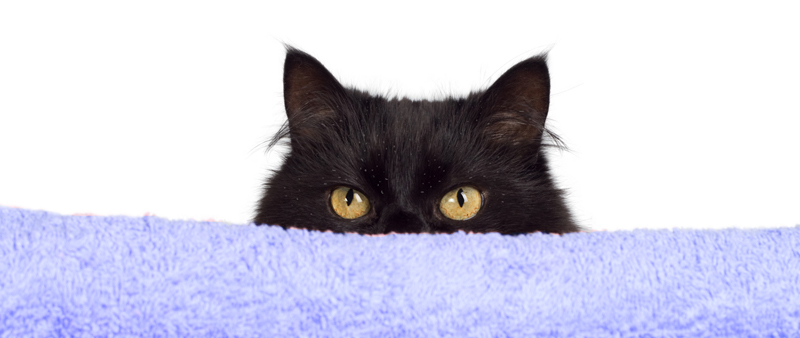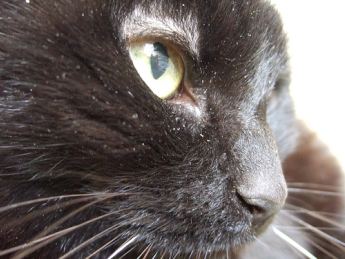
Believe it or not, but many cat owners run into a dandruff problem at some point in their feline friend’s life. The problem is fairly common and can definitely be noticed more if your cat has a darker coloring. This article seeks to inform you about the underlying causes and symptoms of cat dandruff and a few helpful hints to treat it.
When your cat’s skin is healthy it produces “dander” - which is basically composed of microscopic dead skin cells being shed. Dander is invisible and is the allergic trigger that makes many people tear up, inch, and sneeze around cats. Producing dander is normal and healthy for any cat.
Dandruff is a feline skin condition that causes the skin to dry out and flake off. It can be seem fairly easily and may occur in a centralized spot. Unlike dander, it is not normal and could be an indicator of an underlying health problem.
Cat Dandruff Causes
It is very important to seek out the reason for your feline’s dandruff problem. In order to treat the dandruff it is ultimately necessary to treat the condition that is causing it. More often than not, finding the root of the problem can be a little tricky but there are a few main causes for dandruff in cats.
• Dehydration – When you cat is healthy and hydrated, their skin is able to moisturize itself from the water they take in. The humidity of their living environment also plays a role in healthy skin.
• Health Problems – Cat dandruff can occur because of many different medical issues which include food and environmental allergies, infections, feline diabetes, parasites, or being over-weight.
• Eating Habits – A poor diet can lead to many nutritional inadequacies that cause drastic changes in the health of a cat’s skin.
• Cheyletiellosis – This skin disease is also commonly called “walking dandruff” and can be mistaken for typical cat dandruff. It is actually caused by small mites that infest the cat’s skin and hair and should be treated immediately by a veterinarian.
Treating Cat Dandruff
If you are able to rule out any serious medical conditions that may be at the root of your cat’s dandruff problem, there are some simple things you can do around the house to help heal their dry skin.
• Brush your cat daily in addition to their own grooming habits
• Include Fish Oil or Omega-3 supplements as part of your pet’s daily diet
• Make sure that clean and fresh water is available for drinking
• Consult your veterinarian about a suitable diet plan
• Set up a humidifier in order to add moisture to the air
• Use a dandruff shampoo specifically for cats and make sure to wash it out thoroughly
 |
In order to be sure your cat is happy and healthy, it is important to be responsible and recognize the causes and issues associated with cat dandruff. It may seem to be just an unattractive skin condition but it can most definitely indicate that there is a deeper problem. These underlying issues can normally be treated or cured by your veterinarian and it is always good to consult with them first. |
| Russ Barker did not realize what a common problem cat dandruff really was until he started doing a little research for the above article. Russ is manager of blogging operations and initiatives at Dog Tag Art, an internet destination devoted to insuring as many pets as possible are kept safe using proper identitfication tagging. They offer amazingly colorful pet ID tags, that give people a creative reason to ID their pets. Their custom dog tags are super durable and totally personlized so that you can have the identification tag you always dreamed of. |  |

